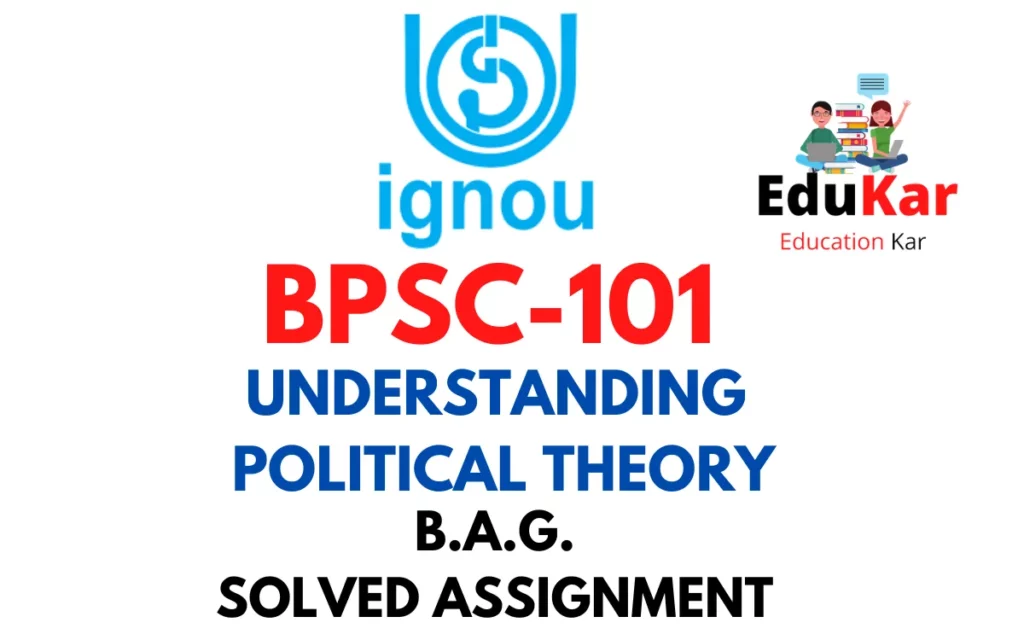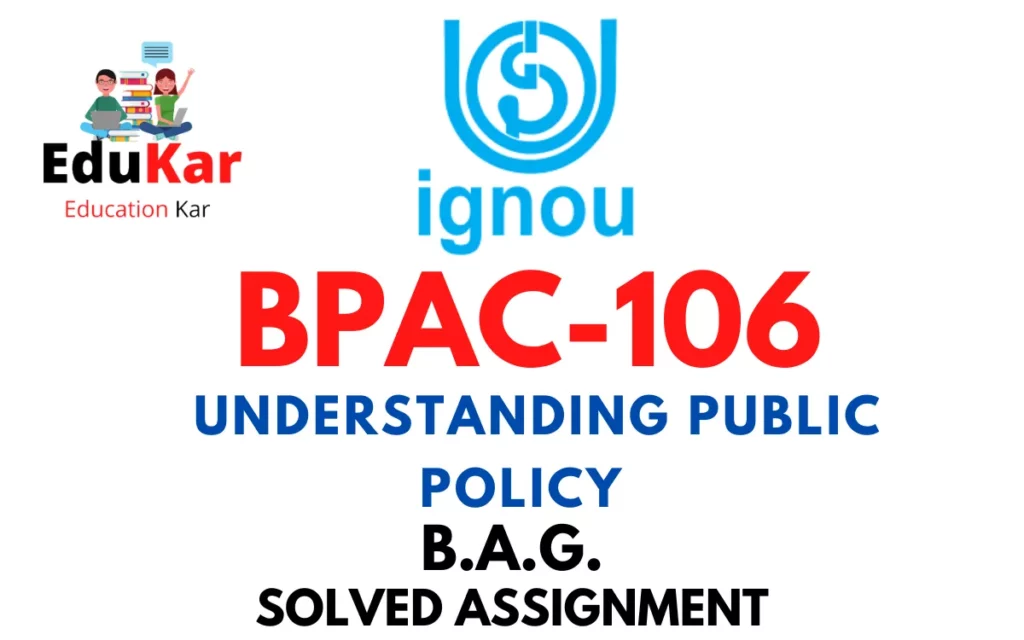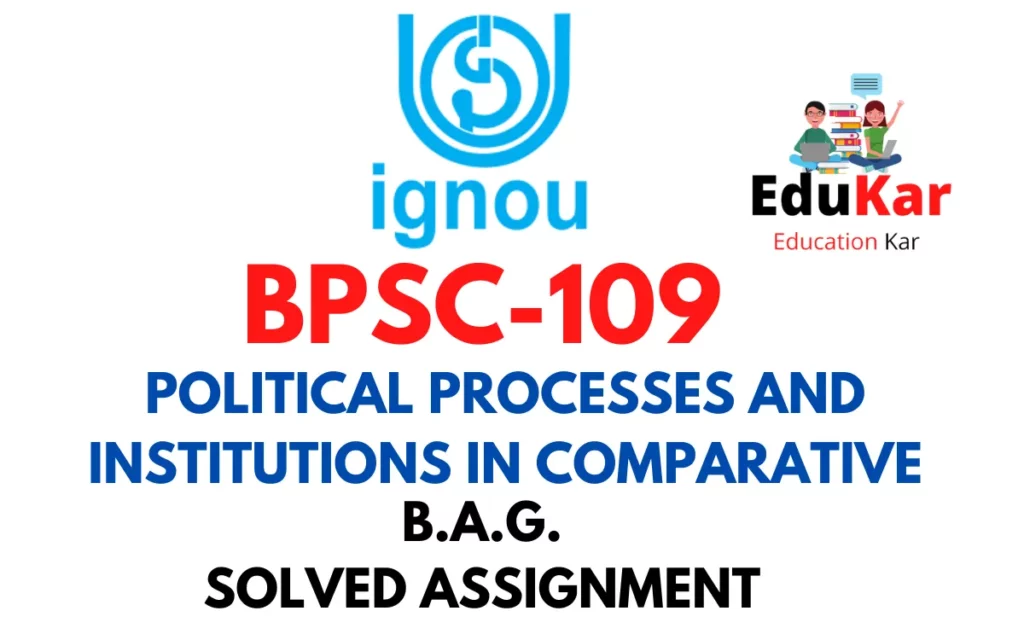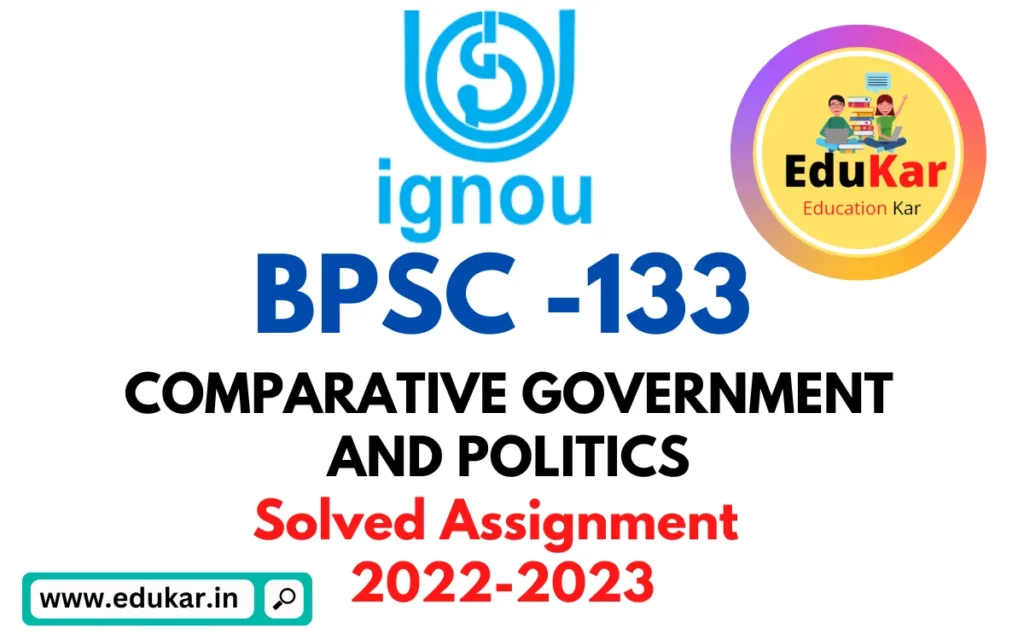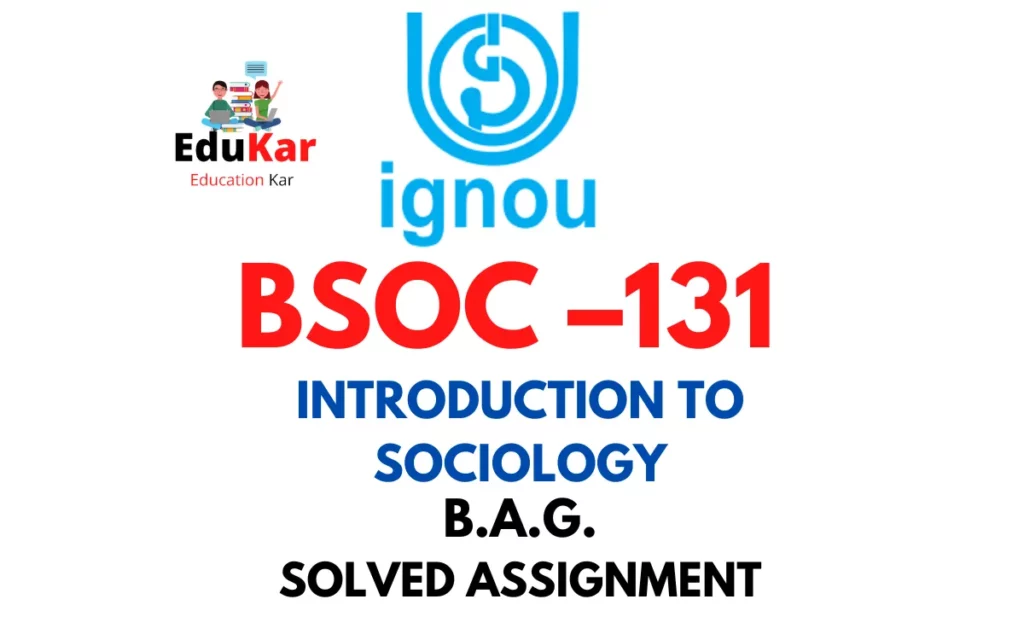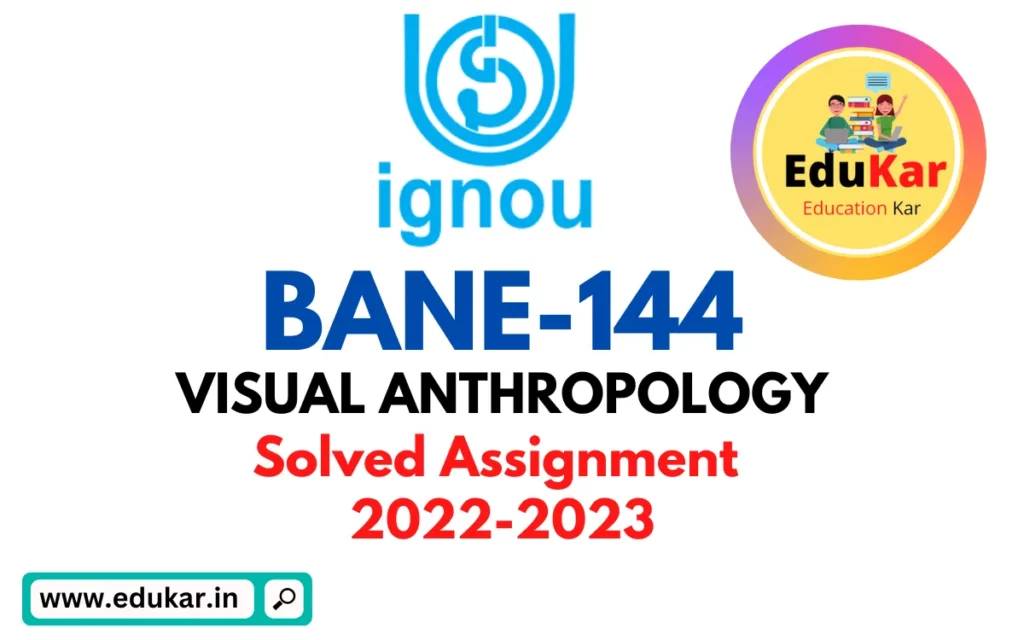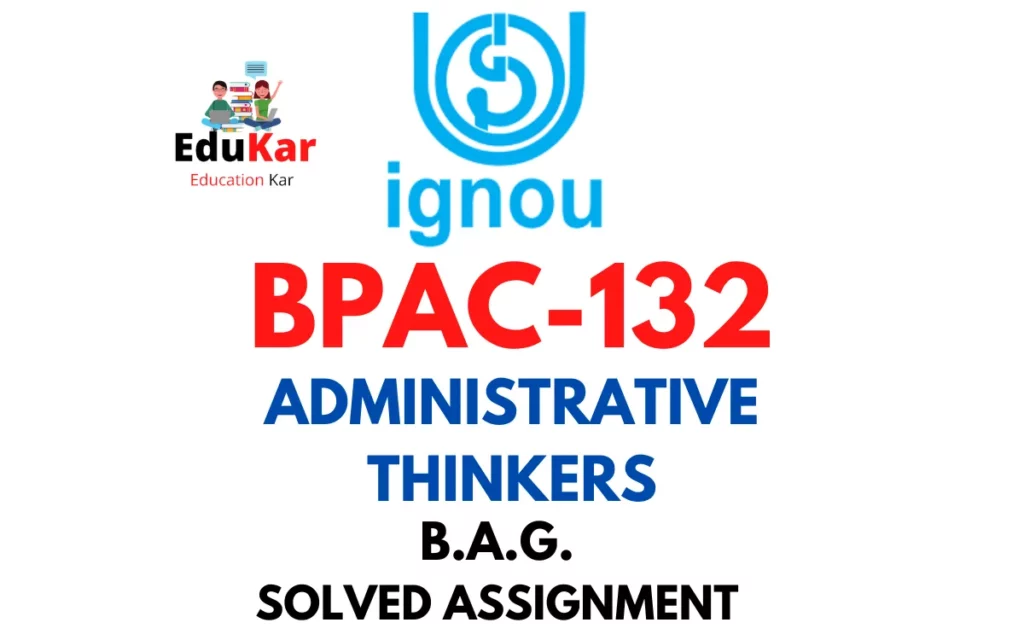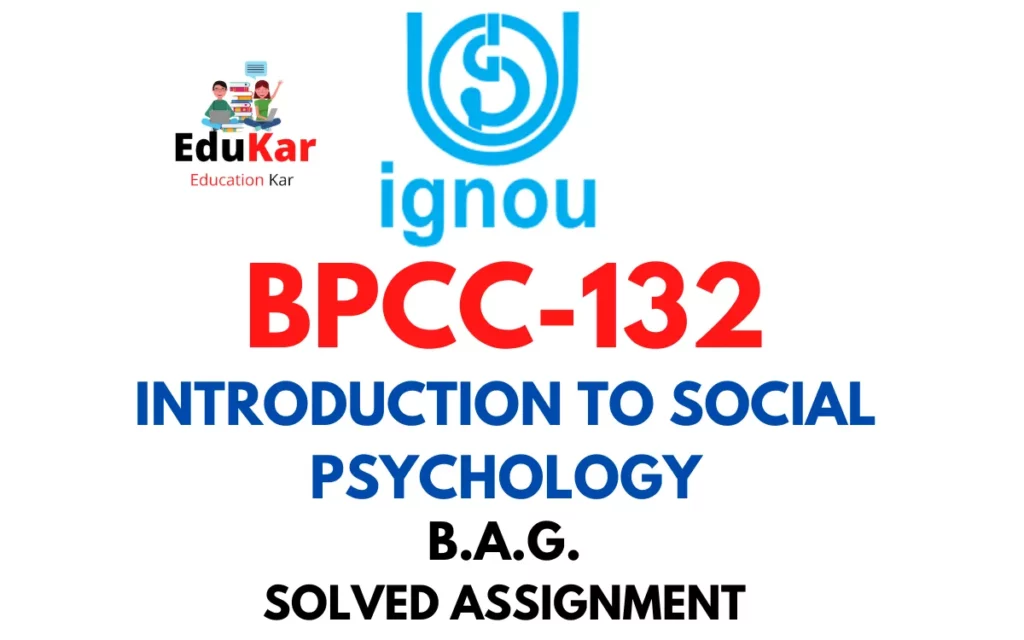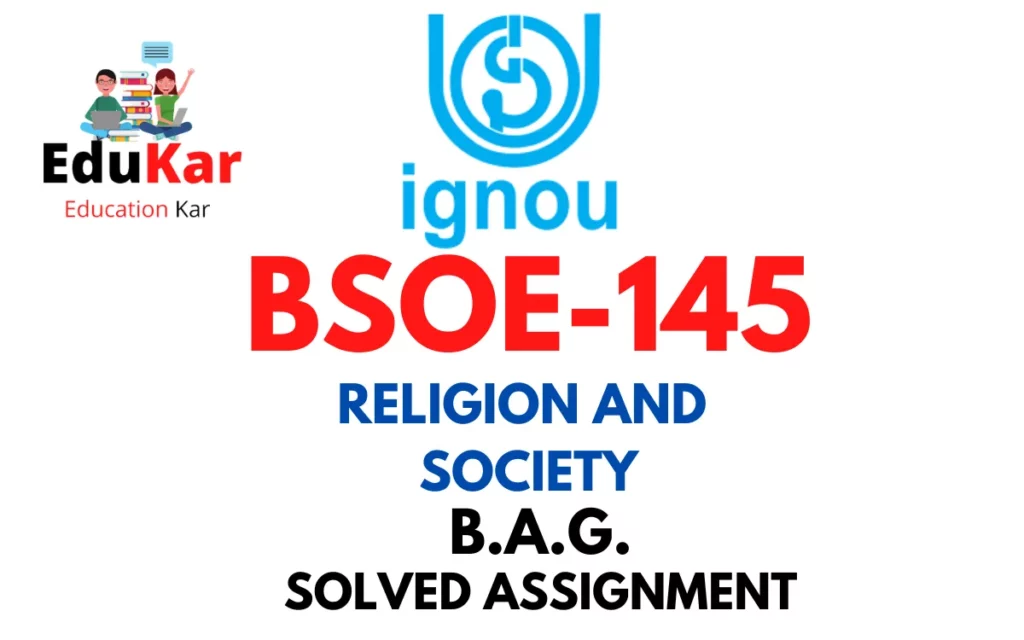Contents
- 1 Assignment – I
- 2 Answer the following in about 500 words each.
- 3 1. Explain the relationship between political parties and democracy.
- 4 2. Elaborate upon the reasons for the separate statehood movements in India.
- 5 Assignment – II
- 6 Answer the following questions in about 250 words each.
- 7 1. Discuss the process of reorganization of states in Northeast India.
- 8 2. Define insurgency, and how does it differ from terrorism?
- 9 3. Explain the evolution of party systems in India.
- 10 Assignment – III
- 11 Answer the following questions in about 100 words each.
- 12 1. Write a brief note on the Aam Aadmi Party (AAP).
- 13 2. What are the important factors that impact the voting behaviour of tribes?
- 14 3. What is the difference between two-party and multi-party systems?
- 15 4. What were the main causes of insurgency in Punjab?
- 16 5. What are the features of autonomy movements?
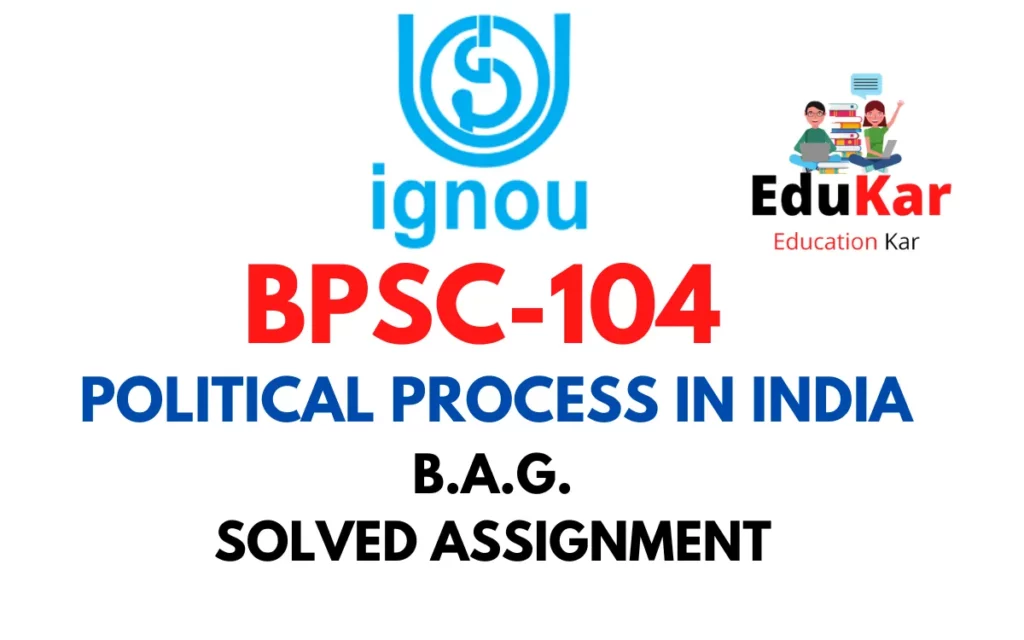
| Title | BPSC-104: IGNOU BAG Solved Assignment 2022-2023 |
| University | IGNOU |
| Degree | Bachelor Degree Programme |
| Course Code | BPSC-104 |
| Course Name | POLITICAL PROCESS IN INDIA |
| Programme Name | Bachelor of Arts (General) |
| Programme Code | BAG |
| Total Marks | 100 |
| Year | 2022-2023 |
| Language | English |
| Assignment Code | BPSC-104/ASST/TMA/2022-23 |
| Last Date for Submission of Assignment: | For June Examination: 31st April For December Examination: 30th September |
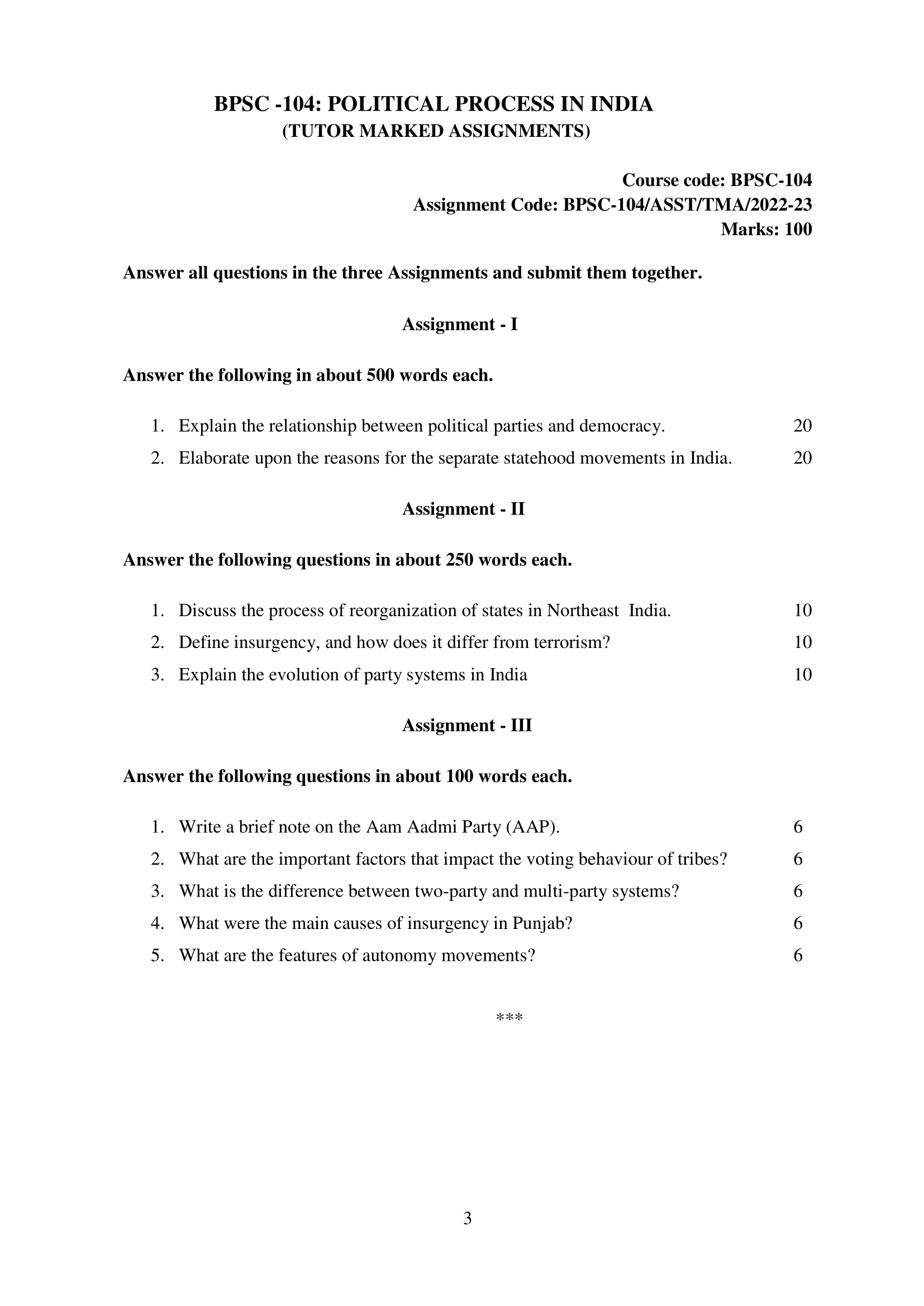
Assignment – I
Answer the following in about 500 words each.
1. Explain the relationship between political parties and democracy.
Ans: Political parties are an essential component of modern democratic societies. A political party is an organized group of people who share similar political views and goals and seek to influence public policy by contesting elections and holding political office. Political parties are vehicles for political representation and competition in democratic systems, and they play a crucial role in ensuring that citizens have a say in how they are governed.
In a democracy, political parties compete for the support of voters through a process of free and fair elections. This competition is based on the principle of popular sovereignty, which means that power is vested in the people, and they exercise that power through the electoral process. Political parties offer voters a choice of different policy platforms and visions of the future, and voters are free to choose the party that they believe best represents their interests and values.
Political parties also serve as a link between citizens and the government. They are the vehicles through which citizens can express their views and interests and have them reflected in public policy. Political parties are responsible for developing and articulating policy positions, representing the interests of their constituents, and advocating for their policy preferences. Through political parties, citizens can participate in the political process, even if they are not running for office themselves.
However, political parties can also pose challenges to democratic governance. One of the main challenges is the potential for polarization and the rise of extremism. When political parties become too polarized, they can create a toxic political environment that undermines democratic values and institutions. Extreme political views can also undermine the legitimacy of the political system and threaten the stability of democratic governance.
Moreover, political parties can also create a situation of political gridlock, where they become more focused on partisan interests than the common good. This can lead to an inability to pass necessary legislation or address critical issues, leading to a loss of faith in the democratic process.
2. Elaborate upon the reasons for the separate statehood movements in India.
Ans: India is a diverse country with multiple ethnic, linguistic, and religious groups. The country’s cultural and regional diversity has led to the emergence of separate statehood movements in various parts of the country. These movements are based on the premise that certain regions or ethnic groups are not adequately represented in the political system and do not have equal access to resources and opportunities.
There have been several separate statehood movements in India. Some of the main reasons for these movements are:
- Historical Grievances: Historical grievances have played a significant role in the emergence of separate statehood movements in India. Some communities feel that they have been discriminated against and have been historically marginalized. This is particularly true for ethnic and linguistic minorities in India.
For example, the demand for a separate state of Telangana was based on historical grievances of the people of the region who felt that they were economically and politically marginalized by the more prosperous Andhra region.
- Economic Disparities: Economic disparities have been another reason for separate statehood movements in India. Some regions feel that they are not getting a fair share of resources and development opportunities.
For example, the demand for a separate state of Vidarbha in Maharashtra is based on the perception that the region is not getting a fair share of development opportunities compared to other parts of the state.
- Cultural and Linguistic Differences: Cultural and linguistic differences have also been a significant factor in the emergence of separate statehood movements. Some communities feel that their distinct culture and language are not adequately represented in the political system.
For example, the demand for a separate state of Gorkhaland in West Bengal is based on the perceived neglect of the Gorkha community and their distinct culture and language.
- Political Marginalization: Political marginalization has also been a reason for separate statehood movements in India. Some regions or communities feel that they are not adequately represented in the political system and do not have a voice in the decisions that affect them.
For example, the demand for a separate state of Bodoland in Assam is based on the perception that the Bodo community is politically marginalized and not adequately represented in the state’s decision-making process.
- Geographical Isolation: Geographical isolation has also been a factor in the emergence of separate statehood movements. Some regions feel that they are geographically isolated from the rest of the state and have unique needs that are not being addressed.
For example, the demand for a separate state of Ladakh in Jammu and Kashmir was based on the perception that the region’s distinct geographical and cultural features were not being recognized, and its development needs were not being addressed.
Assignment – II
Answer the following questions in about 250 words each.
1. Discuss the process of reorganization of states in Northeast India.
Ans: The reorganization of states in Northeast India has been a complex and ongoing process, with the region being historically marked by its cultural diversity, political complexity, and geographical isolation. The process of reorganization of states in Northeast India began with the creation of the state of Assam in 1950, which was subsequently divided into several states, namely Nagaland, Meghalaya, Arunachal Pradesh, and Mizoram. The creation of these states was aimed at providing greater autonomy and recognition to the various ethnic groups and tribes that inhabited the region.
The demand for further reorganization of states in Northeast India is an ongoing process, with several ethnic groups seeking greater autonomy and statehood. One of the main demands has been for the creation of a separate state of Bodoland, which would provide greater recognition and representation to the Bodo community. The demand for a separate state of Karbi Anglong has also been raised by the Karbi community.
The process of reorganization of states in Northeast India has been marked by several challenges and controversies, including issues related to language, ethnicity, and political representation. The creation of smaller states has been criticized for contributing to further fragmentation and division within the region, as well as for promoting parochialism and narrow ethnic identities. There have also been concerns about the impact of statehood demands on regional stability and national security.
Overall, the process of reorganization of states in Northeast India is an ongoing and complex process, with multiple ethnic and linguistic groups seeking greater recognition and representation. While the creation of smaller states has provided greater autonomy and representation to some communities, there are also concerns about the long-term impact of these demands on regional stability and national security.
2. Define insurgency, and how does it differ from terrorism?
Ans: Insurgency and terrorism are two terms that are often used interchangeably, but they have distinct meanings and differences.
Insurgency is a form of armed conflict in which a group of individuals or organizations engage in an armed struggle against a government or ruling authority. Insurgents seek to overthrow or challenge the legitimacy of the government and establish their own political power. Insurgents often rely on guerrilla tactics, including hit-and-run attacks, sabotage, and ambushes, to disrupt government control and gain public support.
Terrorism, on the other hand, is the deliberate use of violence or the threat of violence to create fear and intimidate civilians in order to achieve political, ideological, or religious goals. Terrorist groups may target civilian populations, government institutions, or infrastructure, and use tactics such as bombings, hijackings, and assassinations to create a climate of fear and instability.
While both insurgency and terrorism involve the use of violence for political purposes, there are several key differences between the two. Insurgents often have a specific political agenda and seek to gain popular support for their cause, while terrorists may have more extreme or ideological goals and are often willing to use indiscriminate violence against civilians. Insurgents may also have a territorial or regional focus, while terrorist groups may operate across borders and in multiple countries.
In summary, insurgency and terrorism are two distinct forms of armed conflict that differ in their goals, tactics, and scope. While both involve the use of violence for political purposes, insurgents seek to challenge or overthrow a government or ruling authority, while terrorists seek to create fear and intimidate civilians in order to achieve their goals.
3. Explain the evolution of party systems in India.
Ans: The party system in India has undergone significant evolution since the country gained independence in 1947. India has a multi-party system, which means that there are multiple political parties competing for power and influence.
The first phase of India’s party system began with the Congress Party’s dominance, which was established during the freedom struggle against British colonial rule. The Congress Party was able to maintain its dominant position through a coalition of diverse groups, including socialists, communists, and regional parties. This period was marked by a one-party system with the Congress Party as the dominant player, and other parties functioning as opposition parties.
The second phase began in the 1980s, when the Congress Party’s dominance began to wane due to several factors, including corruption, internal conflicts, and regionalization. This period saw the emergence of regional parties such as the Telugu Desam Party in Andhra Pradesh, the Dravida Munnetra Kazhagam in Tamil Nadu, and the Shiv Sena in Maharashtra. These parties represented the interests of different regions and communities and sought to challenge the Congress Party’s dominance.
The third phase of the party system began in the 1990s with the rise of the Bharatiya Janata Party (BJP), which sought to establish a Hindu nationalist agenda and challenge the secular policies of the Congress Party. The BJP’s rise was aided by the decline of the Congress Party, as well as the emergence of coalition politics, which allowed smaller regional parties to gain power and influence.
The current phase of the party system is characterized by a fragmented and competitive political landscape, with multiple regional parties and alliances competing for power. The Congress Party, which was once the dominant player, has been reduced to a marginal force, and the BJP has emerged as the dominant player in national politics.
Assignment – III
Answer the following questions in about 100 words each.
1. Write a brief note on the Aam Aadmi Party (AAP).
Ans: The Aam Aadmi Party (AAP) is a relatively new political party in India that was formed in 2012. The party was born out of the anti-corruption movement led by social activist Anna Hazare and Arvind Kejriwal, who later became the Chief Minister of Delhi. The party’s main focus is on transparency, accountability, and good governance. It has been successful in Delhi, where it won a majority in the state assembly elections in 2015 and 2020, and has implemented several popular policies such as free water and electricity subsidies for the poor. The party has also contested elections in other states but has not had much success outside of Delhi.
2. What are the important factors that impact the voting behaviour of tribes?
Ans: The voting behavior of tribes in India is influenced by various factors, some of which are:
- Identity: Tribal identity plays a significant role in the voting behavior of tribes. Many tribes vote for candidates or parties that they perceive to represent their community’s interests and aspirations.
- Development: Development is another significant factor that impacts the voting behavior of tribes. Many tribes vote for candidates or parties that they believe will bring development to their areas and improve their socio-economic conditions.
- Leadership: The leadership qualities of candidates are also essential in tribal voting behavior. Tribes often vote for candidates who have a reputation for being honest, responsive, and capable of delivering on their promises.
- Caste: Caste is also an important factor that influences the voting behavior of tribes. Tribes with a higher social status may vote for candidates or parties that represent their caste interests.
- Issues: The issues that affect tribes, such as land rights, forest rights, and cultural preservation, are also important in their voting behavior. Candidates or parties that address these issues are likely to receive more support from tribes.
- Media: The media can also play a role in tribal voting behavior. Media coverage can influence the perception of candidates or parties among tribes and can impact their voting behavior.
3. What is the difference between two-party and multi-party systems?
Ans: The two-party system and the multi-party system are two different types of political systems. The key difference between the two systems is the number of political parties that have a significant presence and influence in the political process.
In a two-party system, two major political parties dominate the political landscape and compete for power in national and regional elections. The two parties typically have different political ideologies and policies, and they tend to capture the majority of the votes in the election. The United States is an example of a two-party system, where the Republican and Democratic parties have dominated the political landscape for decades.
In a multi-party system, there are multiple political parties that compete for power and influence in the political process. The parties typically represent a diverse range of interests and ideologies, and they may form alliances or coalitions to gain power. Examples of countries with multi-party systems include India, Germany, and Israel.
The main advantage of a two-party system is that it provides greater stability and predictability in the political process, as the two major parties tend to have well-defined policy positions and platforms. However, it can also limit political diversity and representation, as smaller parties and independent candidates may struggle to gain visibility and influence.
A multi-party system, on the other hand, can provide greater representation of diverse interests and ideologies, as smaller parties and independent candidates have a greater chance of gaining power and influence. However, it can also lead to political fragmentation and instability, as forming stable government coalitions can be challenging.
4. What were the main causes of insurgency in Punjab?
Ans: The insurgency in Punjab, also known as the Sikh separatist movement, was a period of violence and political conflict that lasted from the 1980s to the early 1990s. The main causes of the insurgency can be attributed to a combination of political, economic, and cultural factors.
Firstly, there was a sense of political marginalization among the Sikh community, which felt that their political and economic interests were being ignored by the central government. The demand for a separate state of Khalistan, led by extremist groups such as the Babbar Khalsa, gained traction among some sections of the Sikh community.
Secondly, the economic situation in Punjab was also a contributing factor to the insurgency. The Green Revolution had led to the consolidation of landholdings and the displacement of small farmers, which in turn led to a rise in unemployment and rural distress. This provided a fertile ground for extremist groups to recruit disillusioned youth.
Thirdly, the religious and cultural differences between Sikhs and Hindus also contributed to the insurgency. There was a growing sense of Sikh identity and pride, which was seen as a threat to the Hindu-dominated political and social order. This led to a sense of discrimination and victimization among the Sikh community, which fueled the demand for greater political autonomy and cultural recognition.
5. What are the features of autonomy movements?
Ans: Autonomy movements are characterized by demands for greater political and cultural autonomy for a specific region or community. These movements are often driven by a sense of cultural or linguistic identity, and the desire for greater representation and decision-making power. The key features of autonomy movements include demands for decentralization of power, the recognition of regional languages and cultures, and greater control over local resources and institutions. Autonomy movements can take different forms, ranging from peaceful protests and negotiations to armed struggle and insurgency. Examples of autonomy movements include the demand for a separate state of Bodoland in India and the Basque separatist movement in Spain.
How to Download BPSC-104 Solved Assignment?
You can download it from the www.edukar.in, they have a big database for all the IGNOU solved assignments.
Is the BPSC-104 Solved Assignment Free?
Yes this is absolutely free to download the solved assignment from www.edukar.in
What is the last submission date for BPSC-104 Solved Assignment?
For June Examination: 31st April, For December Examination: 30th October

